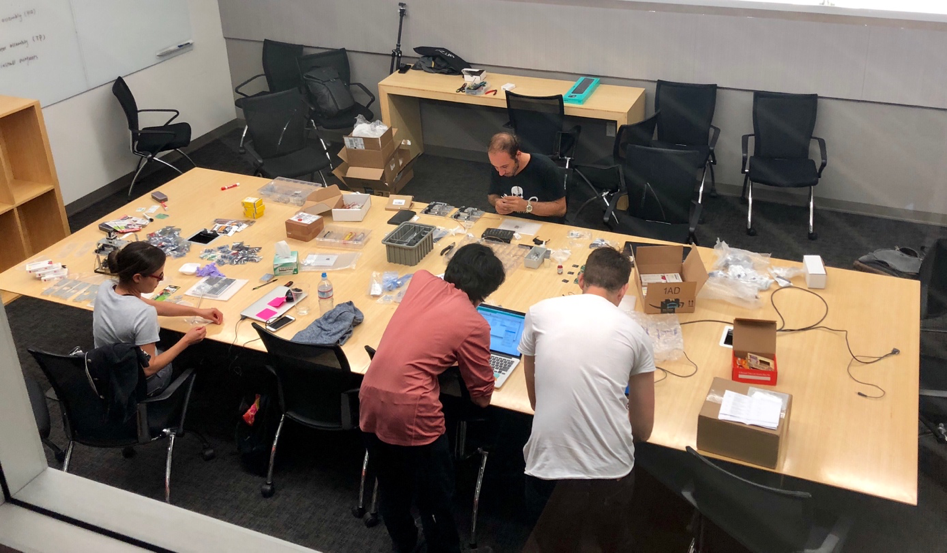Prakash Lab’s Octopi microscope can be rapidly adapted for specific uses in disease diagnosis, environmental monitoring, and research.
Team members: Manu Prakash, Hongquan Li, Maxime Voisin, Lucas Fuentes Valenzuela, Hazel Soto-Montoya, Ethan Li.
Problem
Normal microscopes require users to manually operate the tool and scan samples by eye, meaning that everyday tests can take up to an hour or more to complete. For deadly diseases such as malaria, microscopes are crucial for accurate diagnosis and treatment. Although rapid diagnostic tests can check if malaria is present, healthcare workers have to assess the severity and plan treatment by manually counting the number of parasites with a microscope.
Automated, electronic microscopes make testing and analysis faster — but more expensive. Depending on configurations and capabilities, automated microscopes can cost anywhere from $10,000 to $200,000 and may be restricted to specific uses.
Solution
In 2014, Prakash Lab’s Manu Prakash and Stanford scientist Jim Cybulski launched Foldscope, a $1 portable paper microscope. In a field visit to Uganda, Prakash saw that while cheaper microscopes helped in the field, health center technicians running malaria tests were hindered by the limited speed and capabilities of their manual tools.
Prakash Lab developed Octopi in response. The portable, seven-pound microscope uses a phone charger and can be assembled on-site. It can automatically analyze slides up to 120 times faster than traditional microscopes and can screen more than 1.5 million red blood cells per minute for parasites.
Though malaria is a specific focus — imaging ring stage malaria is one of the hardest diagnostic applications for microscopes — users can easily reconfigure the tool to meet their needs. In addition to malaria, the team has already demonstrated diagnostic use cases for tuberculosis, upper respiratory bacterial infections, schistosomiasis, and trypanosomiasis.

Octopi’s name derives from its purpose — an open, configurable, high-throughput platform for infectious diseases — while saluting the low-cost computer Raspberry Pi and octopuses, who, like the microscope, are known for their adaptability.
Vision
Prakash Lab wants to create a global community that will democratize the use of microscopes and make the lives of lab technicians easier. The team recently published Octopi’s technical details and, using funding and resources from Tool Foundry to develop and scale, aims to distribute 100 of the tools to collaborators around the world this year for the first round of testing. Users can constantly improve Octopi’s algorithms by sharing data with the community.
“We hope to bring together communities with diverse expertise and access to complementary resources to collectively advance microscopy-based disease diagnosis.”
– Honquan Li, Stanford graduate student and Octopi team lead
This summer, team members traveled to Rwanda and Uganda, where they successfully tested Octopi in the field and trained local research staff to use it. The data collected will help the team measure the specificity and sensitivity of the tool for the next round of deployment. Currently, 10 Octopi are already in use in multiple locations, including India, Uganda, and more than five research labs in the US.
Read more about Octopi in The Atlantic and Hackster.io.
Next week, we’ll be spotlighting the Spectra cohort team. Subscribe to our newsletter to learn more about the cohort teams and follow their progress.